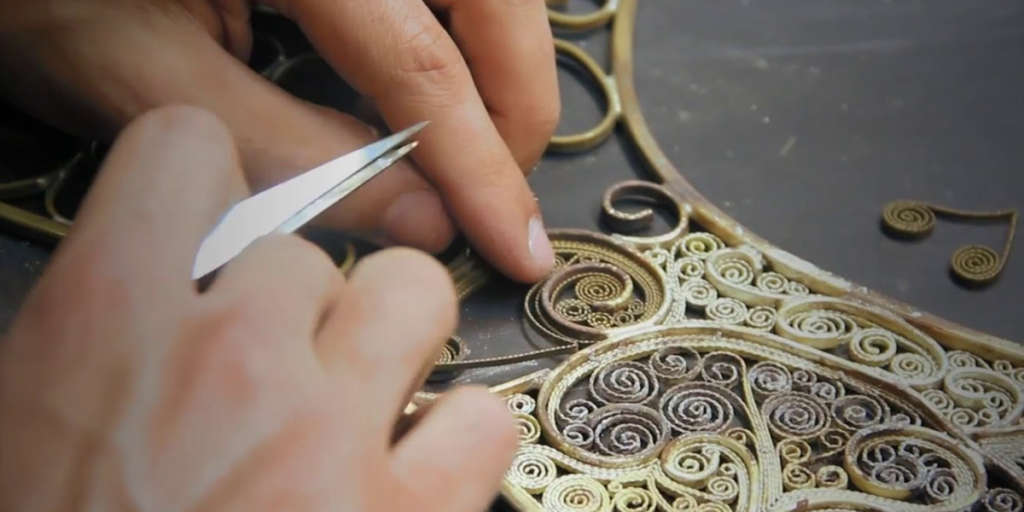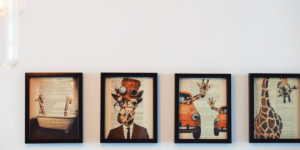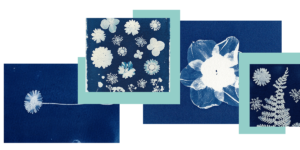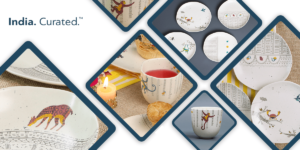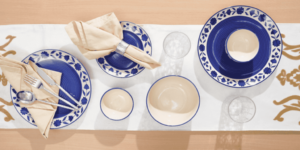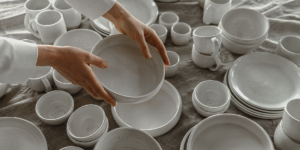As each day passes, we are drifting away from the roots of our culture in this fast-paced world. However, traditional Indian Artforms such as Lambani local embroidery motifs have been practiced for decades. It is passed down from one generation to the next. Moreover, these multitudes of art forms have stood shoulder to shoulder with the fast-evolving world, keeping intact their inherent meaning and significance.
Today, you can see these works of art woven into your headscarf, embellished in your most coveted piece of jewelry, or combined into your silverware. We bring you three such Karnataka Lambani local embroidery crafts. Banjara Lambani local embroidery Motifs means that have advanced with time, only to become a part of our modern lifestyle.
Indian Artforms – Karnataka’s Local Embroidery Motifs
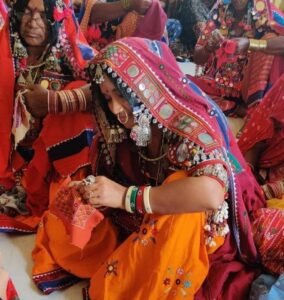
Women donning Karnataka’s local embroidery dupattas (https://images.app.goo.gl/7qZHfRUYENuToeNt6)
Beautifully done on Tamil Nadu-sourced cotton khadi and power loom fabric, Lambani local embroidery stitches and work are famous for their distinct design. Also, weave patterns, and technique.
Furthermore, Karnataka started a tradition of passing on their culture and beliefs to their daughters in the form of a bridal trousseau. Now, the Lambani local embroidery Motifs is loved and demanded globally.
Today, Lambani local embroidery motifs are helping earn a dignified living for numerous tribal women. It also uses a total of fifteen different types of stitches on a bright-colored fabric, traditionally, red and blue. What makes Lambani meaning unique is the use of patchwork, motifs, coins, and shells in its design. It is often used for bed sheets, cushion covers, traditional dresses, wall hangings and so on. Lambani women or nomadic people uses coins and shells, mirror work in the base cloth to show their creativity.
World-famous semi-nomadic Indian artforms – Lambani Local Embroidery Motifs
With time, signature local embroidery has evolved to cater to the demands of modern-day consumers. The Lambani local embroidery Karnataka has also made an entrance in the top markets of America, the Netherlands, and Japan.
Nowadays, people can see Lambani local embroidery stitches on everything, from headwraps and bags to bedding articles. Additionally, the intricate designs made with an array of colors make Lambani a must-have in one’s closet. The combination of Lambani tribals’ nomadic lifestyle, rituals, and culture in the art also gives it a Bohemian vibe. A Lambani local embroidery motifs piece takes painstaking work of approximately 110 hours. Which makes it a highly meticulous Lambani Local embroidery stitches art form.
Filigree, an art of intricate metal work
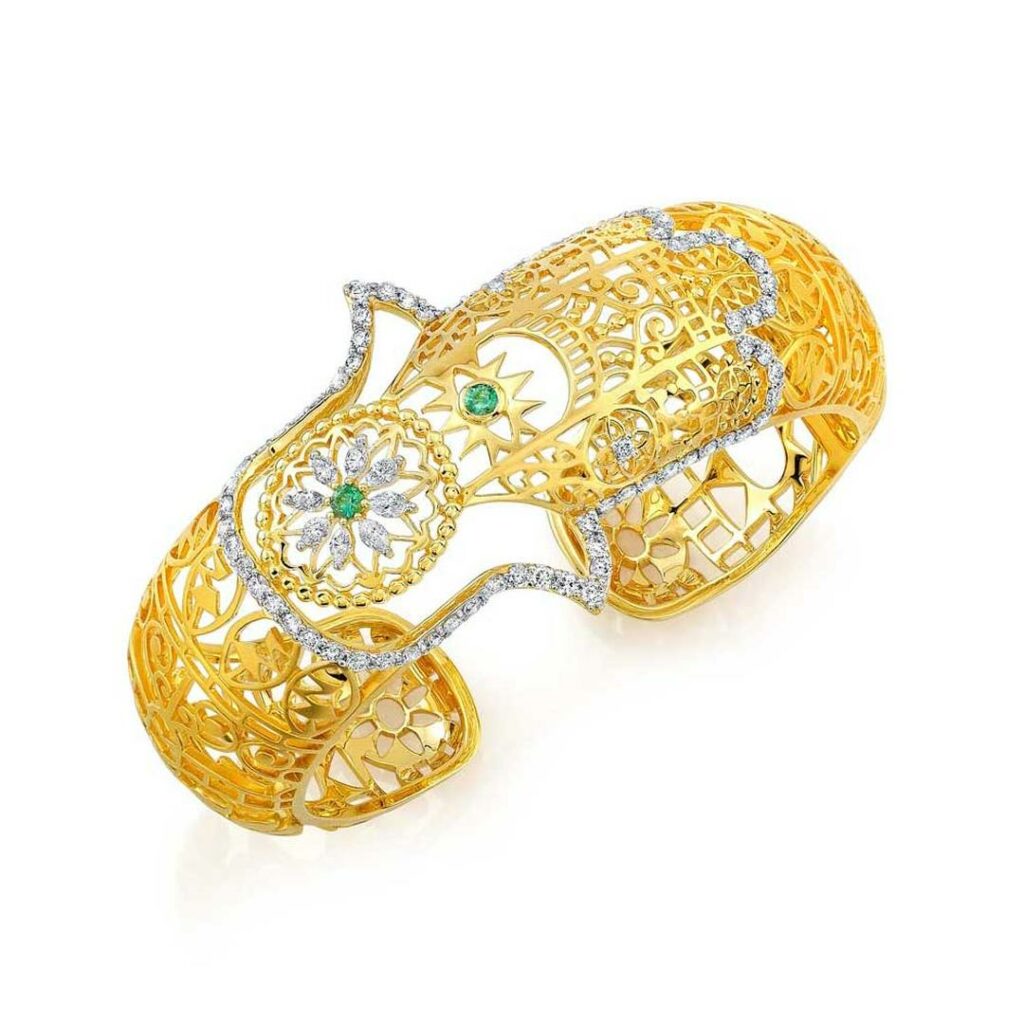
Buddha Mama Filigree hinged cuff. (Source: https://images.app.goo.gl/gEcTqmi6i2u1Nf7S6)
Craftsmen have been using the 500-year-old traditional craft of Orissa, Filigree, to make wearable decorative pieces and utensils. Conventionally made by interweaving lace-like flattened silver wires, the artwork gives immense possibilities to the craftsmen. These complex and intricate handmade pieces of Lambani local embroidery stitches never fail to tell the stories of the craftsmen.
Light in weight, and elegant in style, the Filigree jewelry pieces have flowers, tendrils, spirals, leaves, and motifs on them. Moreover, one can see silver Filigree work everywhere, from bridal collections to home décor to lifestyle products.
An age-old twist
Even when the demand for Filigree jewelry is brimming, there are very few artisans in Cuttak, Odisha, and Andhra Pradesh who make this craft. Additionally, the reason the art is in dire straits is meager earnings in return for months of hard work. Moreover, even a tiny piece of filigree jewelry worn by Lambani women takes months of fire and heat to complete.
The Lambani saree origin and its art have extensive scope because people from foreign countries. Like America and Canada have a penchant for this ancient Indian jewelry style. Furthermore, famous modern-day jewelers like Buddha Mama and Chopard are also using this age-old technique to serve the modern demands of Lambani women.
The Filigree made from Gold and Platinum is in demand and needs market expansion. If given a chance, Indian Filigree can also expand its presence in the global market, and hand-crafted artisan products such as Lambani saree origin can earn significant profits.
Indian artforms – Bidar’s metalwork, Bidri

Bidri art incorporated into modern-contemporary jewelry design by lambani women(Source -https://images.app.goo.gl/9GnDNWtQm3EF1NjQA)
When discussing the unique creativity of the human mind working in unison with the hands, one cannot overlook the renowned Bidri craft. Craftsmen in various Indian states such as Karnataka, Telangana, Bihar, Uttar Pradesh, and also West Bengal. They have been beautifully crafting this art and Sandur Lambani local embroidery for about 500 years.
The technique is an exquisite combination of the local artisans’ ideas and knowledge with Turkish, Persian, and Arabic art. Today, Sandur Lambani local embroidery and handicrafts made in India using Bidri have also earned their rightful place in the world of art. Crafting a single piece of Bidri craft is an intricate and time-consuming process, involving the inlay or overlay of metals such as Silver, Brass, and Gold into an alloy of Copper and Zinc.
Indian artforms – A Sense of Cohesion in Contrast
The craftspeople involved in the Lambani saree origin art also produce some stunning artifacts using an elaborate process that starts with the molding of alloy. It completes with oxidizing the end-product using soil and aluminum chloride. Furthermore, the most common patterns formed on a Bidri ware are ‘teenpatti ki booti,’ ‘Ashrafi ki booti,’ ‘Kairi,’ and ‘mahi-pusht.’ The eye-catching work of Silver and Gold against the darker hues is a treat to the senses, mind, and body.
The various items crafted using Bidri are a part of our Home décor, Kitchen and Dining, and lifestyle. One piece of the craft takes up to 20 days to complete, thereby making it a highly detailed work.
So you can discover some local small-scale industry specializing in the export of bed sheets. They are also offering a stunning range of cushion covers in subtle designs for an elegant touch to your home decor.
ExpoBazaar is a subsidiary of India Expo Mart Limited (IEML). IEML is known for hosting Asia’s largest Indian Handicrafts and Gifts Fair (IHGF) and others like India International Hospitality Expo (IHE) and ELECRAMA.
Bill Gates once said, “If your business is not on the internet, then your business will be out of business” and we couldn’t agree more. There is a wave of new establishments and startups who have taken their business online, ushered by the induction of the internet. The B2C e-commerce in India clocked around $67-84 billion in 2021, according to Fiber2Fashion. A different genre altogether, the B2B e-commerce offers a much larger market and is estimated to reach $60 billion by 2025. There was never a better timer to start an online business, and this guide will help you understand the basics of “B2B Companies in India : essential guide to starting your business.”

- Choose a business structure
- Select a niche product
- Build a Brand
- Build a Website
- Logistics
Selecting a Business Structure for B2B Companies in India
“Rome wasn’t built in a day” and so shouldn’t a business. Proper research and study should be conducted before starting a venture. Start by penning down what kind of B2B platform you want to build. There are 2 kinds:
- Single-vendor marketplace: Involves only 2 entities, the seller who sources the products and the buyers. Although this is easier to manage and keep track of transactions, the catalogue might not include a great variety of products. This marketplace also makes it easier to manage inventory.
- Multi-vendor marketplace: Involves multiple sellers. Due to multiple sellers, the catalogue offers a wide range of products and options, but this marketplace might be difficult to manage.
Discover Profitable Niche Products for B2B Companies in India
After you’ve determined a company model, the following step is to find a niche product. This means that you, as a business entity, should choose a product in which your company specializes. Of course, as your business grows and evolves, you can launch new and varied products based on your company’s potential, but in order to give your firm a solid start, you must first identify your hero product or category of products.
For example, ExpoBazaar, a digital B2B platform exhibiting India’s hand-curated artisanal and lifestyle products to global markets, is a B2B business model that has chosen home and lifestyle products as its specialty area of products. They will primarily promote selected merchandise that falls within the home and lifestyle category under this area, i.e. products such as home furnishings, furniture, eco-friendly handcrafted products, home décor, and more.
There’s a likelihood that this company may move forward and introduce new products and services from a different category, but for the time being, they’ve picked their niche category as home and lifestyle, which is more viable for them than introducing all categories at once. The reason for this is that when you choose a hero product category, it becomes easier for you to comprehend, analyze, and assess the success of your business so that by the time you launch your next product, you will have a better grasp of what works and what doesn’t.
Build Your Product for B2B eCommerce in India
Now that you know how to start an e-commerce firm, it’s time to delve deeper into the subject. Several manufacturers and other businesses can use a digital platform to promote their products or services, which also serves as a means of advertising their company. Why would the platform need to be advertised in this case? Many people who desire to establish an E-commerce firm wonder about this.
However, in order for clients to visit the platform, it must first capture their interest. Another thing to keep in mind is that there are many small-scale platforms out there, so it is critical to capture the attention of everyone who is online. And this may be accomplished using digital marketing tactics because people who utilise an E-commerce platform must also be targeted using digital advertising and marketing approaches. You may utilise the checklist to build your marketing strategy by learning about all the many approaches to encourage consumers to visit your e-commerce platform.
Consider what you want from your e-commerce website and b2b e commerce advantages towards your business. Begin by determining your must-haves. Consider the very minimum of features and functions required to satisfy you and your customers: your minimal viable product (MVP). Only after that, if time and money allow, should you consider any further nice-to-haves.
Consider the following when developing your e-commerce MVP:
-Check that it is in line with your e-commerce objectives.
-Include only the features and functions that you want to employ in the first year after your e-commerce website goes live.
-Make sure it answers the most frequently asked questions from your consumers.
-Be honest with yourself about how much you can accomplish with your current resources. For example, if you want a video content component, be sure you have the internal talents and resources (or the funds to employ an external firm) to develop this video content.
-Before delving into more expensive and sophisticated adaptations, make the most of the capabilities and features provided by your selected e-commerce platform.

Build a website
Building your website for B2B eCommerce in India is the next step to starting an e-commerce business, however, there are a few things that you need to consider while starting with your new e-commerce website. Companies that are just starting out with their first e-commerce website frequently overlook the importance of content and benefits of b2b e commerce. A lot of content is required before you can launch an e-commerce website, ranging from product and company descriptions and photographs to online store look-and-feel, structure, and categories.
As a result, you must be prepared to organize and populate your web store. Consider the products you intend to sell. Determine the organization, key categories, and subcategories. Check that you have an image for each product and that it is of sufficient quality. Perhaps you’ll also need to generate some technical materials for your customers to use when installing your products.
Logistics
Any successful business owner or online business experts understands the pivotal role of well-managed logistics. Online business expert of B2B eCommerce in India recognize the critical role of seamless logistics in meeting consumer demands and surpassing the competition. Once a business has a firm grasp on its consumers’ expectations, it must develop a strategy for meeting those goals via logistics. This requires a firm grasp of or analysis of the organization’s strategic direction.
Proper logistics expertise and management benefits organizations in the following ways:
- Logistics fosters a business-friendly atmosphere.
- Logistics improves the experience of your customers.
- Logistics helps to increase the value of a firm.
- Logistics helps you get your products to the right place at the right time.
- Logistics helps to reduce costs and improve efficiency.
- Lowers operational costs
Conclusion
Undoubtedly, there are numerous other factors that we could not cover in this article, all of which are critical for firms that are just getting started. Nevertheless, that is the nature of business; you learn via trial and error. However, it is always prudent to conduct a study before launching a new business, as an understanding of a subject will only benefit you. So, Discover the advantages of B2B eCommerce in India, and gain valuable online business tipps to succeed in the ever-growing market. B2B eCommerce in India offers increased efficiency, cost saving opportunity, wider market reach, streamlined transactions, and provide several other benefits of benefits of B2B e-commerce.

